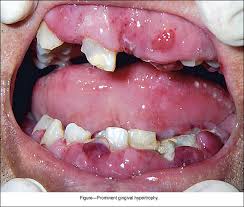Using Blood Stem Cells for Transplants Increases Survival for Advanced Leukemia Patients ![]()
Compared with stem cells from a bone marrow transplant, stem cells taken directly from the bloodstream and transplanted into patients with advanced leukemia may help increase their rate of disease-free survival, according to a study in the Jan. 18 issue of The New England Journal of Medicine.

Researchers led by William I. Bensinger, MD, of the Fred Hutchinson Cancer Research Center in Seattle, studied 172 patients, most of whom had leukemia or lymphoma. The patients had either a bone marrow transplant or a transplant using blood stem cells called peripheral blood cells.
The researchers found 57% of those with more advanced cancer who had peripheralblood cell transplants were still alive two years later, compared with only 33% of those who had a bone marrow transplant. "We were surprised by the results we saw. We didn?t think the differences in survival would be as great as they were," Bensinger says.
Regardless of what type of transplant they had, about the same number of patients with less advanced cancer were still alive two years later.
Stem cell transplants are given to leukemia patients to help them overcome the harsh effects of high-dose chemotherapy needed to kill leukemia cells. The cells can either be taken directly from a donor?s bone marrow ? by a relatively painful procedure that involves the insertion of a large needle into the center of the bone ? or removed from a donor?s bloodstream by a painless procedure.
There are several reasons for the effectiveness of peripheral blood cells, according to Bensinger. "Patients who receive peripheral blood not only recover their counts [of different types of blood cells] faster, they recover their immune function faster. There?s data suggesting fewer infections in these patients," he says.
He also points out that transplanted peripheralblood cells might have an increased ability to fight residual leukemia cells that have evaded chemotherapy.
One negative finding of the study centers on a debilitating condition known as graft-versus-host disease (GVHD) that often accompanies a transplant. The researchers found GVHD appears to be slightly worse with peripheral-blood cell transplants. Because of this Bensinger suggests patients with advanced cancers are the most appropriate candidates for the procedure. "Graft-versus-host disease is a complication of transplants that can lead to problems with organ function, skin problems, GI [gastrointestinal] problems such as diarrhea, and an inability to absorb nutrients properly ? so it can be a very debilitating illness," he says. "It is of concern, and that means we have to have more follow-up on this study."
Ralph Vogler, MD, scientific program director for the American Cancer Society (ACS), advises patients to ask their doctors about the risks of receiving peripheral blood cells compared to bone marrow transplants. "The advantages of a peripheral blood cell transplant are quicker blood count recovery and suggestively better survival," he says. But Vogler adds that some patients feel chronic GVHD is a disadvantage. "Grade III or IV graft-versus-host disease is extremely serious and still occurs too often," he says.
"GVHD is a two-edged sword," adds Herman Kattlove, MD, an oncologist and medical editor for the ACS. "Because it is an immune reaction against the transplant recipient?s body, it can lead to toxic side effects. But this immune reaction also reacts against the patient?s cancer cells and might account for the good results seen in this study. It didn?t seem to make any difference in the patients with less advanced cancer, probably because most of them had good results with either kind of transplant."
For Further Reading,

